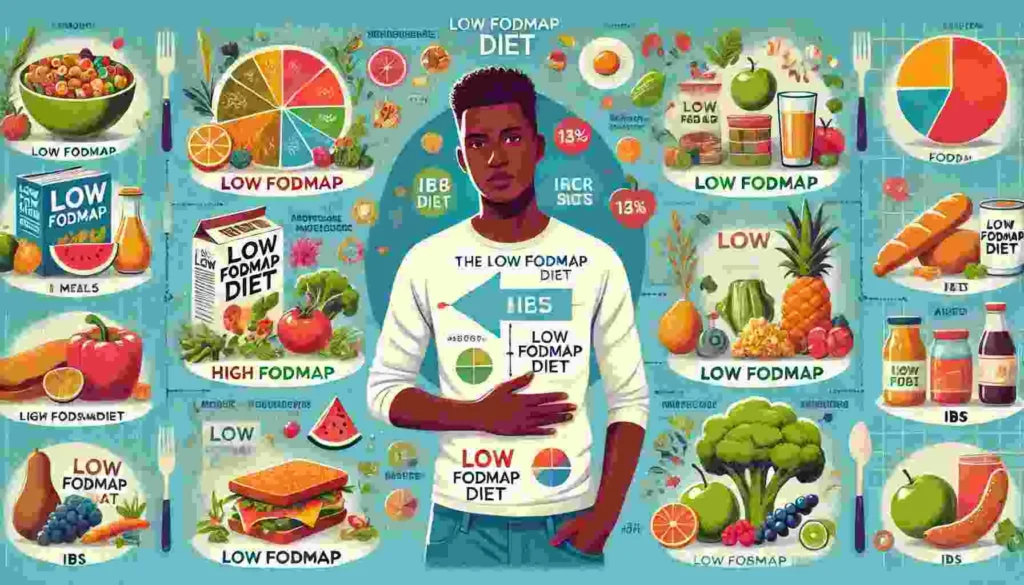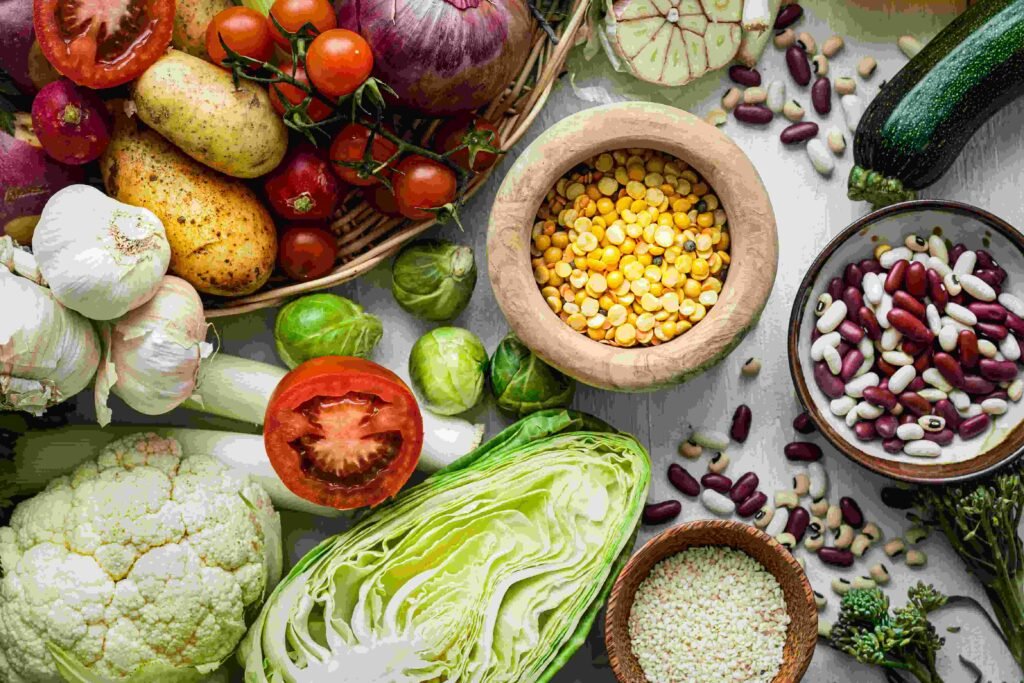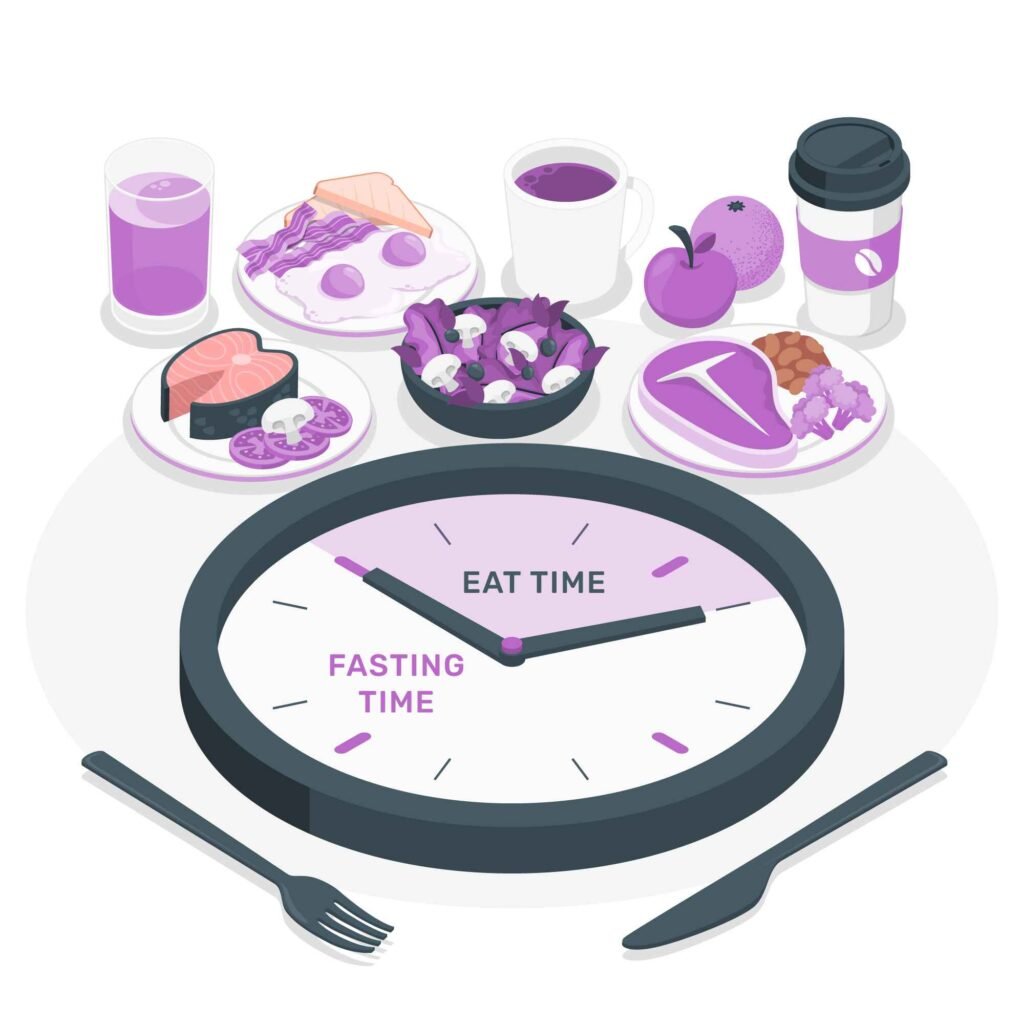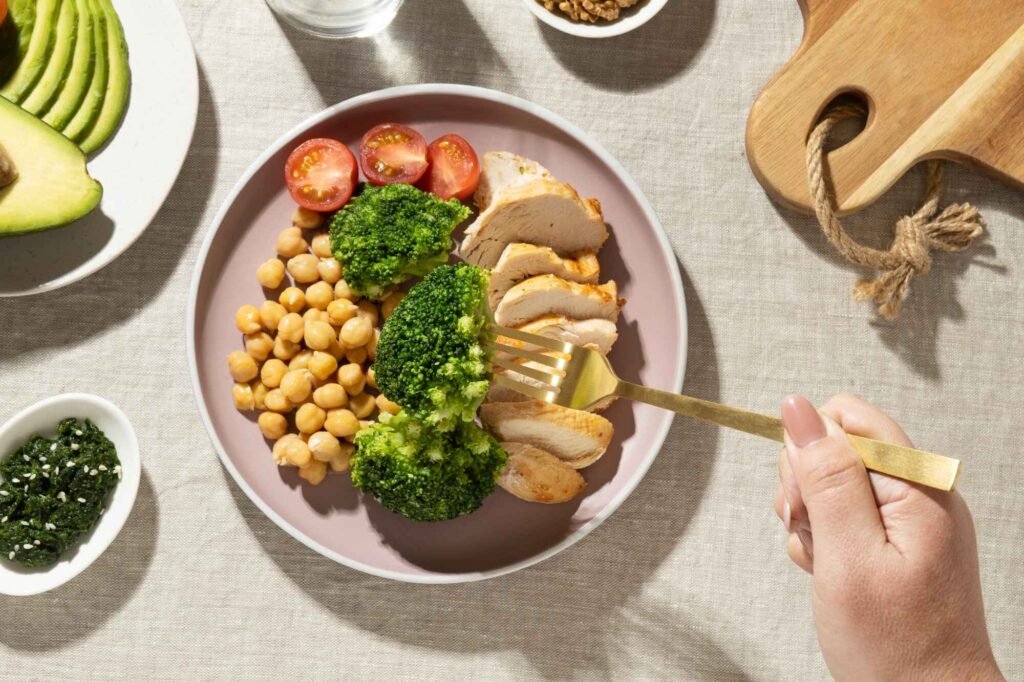
Low FODMAP Diet for IBS: What You Need to Know
Low FODMAP Diet for IBS: What You Need to Know
Living with Irritable Bowel Syndrome (IBS) can be frustrating and challenging. Symptoms like bloating, gas, abdominal pain, and irregular bowel movements can disrupt your daily life. Fortunately, research has shown that the Low FODMAP Diet can be highly effective in managing these symptoms. This guide will walk you through everything you need to know about the Low FODMAP Diet — from understanding FODMAPs to practical tips on implementing the diet.
What Are FODMAPs?
FODMAPs are a group of fermentable carbohydrates that are poorly absorbed in the small intestine. The term FODMAP stands for:
- Fermentable
- Oligosaccharides (e.g., fructans, galacto-oligosaccharides)
- Disaccharides (e.g., lactose)
- Monosaccharides (e.g., fructose)
- And
- Polyols (e.g., sorbitol, mannitol)
When these carbohydrates aren’t fully digested, they travel to the large intestine, where gut bacteria ferment them, producing gas and drawing water into the bowel. This process can lead to bloating, gas, and changes in bowel movements — all common symptoms of IBS.
How Can the Low FODMAP Diet Help with IBS?
The Low FODMAP Diet is designed to reduce your intake of these fermentable carbs, alleviating symptoms of IBS. Research indicates that up to 75% of IBS sufferers experience symptom relief on a Low FODMAP Diet.
Here’s how the diet works in three key phases:
- Elimination Phase: Avoid high-FODMAP foods for 4-6 weeks.
- Reintroduction Phase: Gradually reintroduce FODMAPs to identify triggers.
- Personalization Phase: Develop a long-term diet based on your unique tolerance levels.
This structured approach helps you pinpoint the specific FODMAPs that trigger your symptoms while maintaining as much dietary variety as possible.
Foods to Avoid on a Low FODMAP Diet
During the elimination phase, it’s essential to avoid foods high in FODMAPs. Here’s a breakdown of common high-FODMAP foods:
High-FODMAP Fruits
- Apples
- Pears
- Watermelon
- Mango
- Cherries
- Peaches
These fruits contain fructose or polyols, which can be problematic for those with IBS.
High-FODMAP Vegetables
- Garlic
- Onions
- Cauliflower
- Asparagus
- Brussels sprouts
- Mushrooms
These vegetables contain fructans or polyols, which can contribute to gas and bloating.
High-FODMAP Dairy
- Milk (cow’s, goat’s, and sheep’s)
- Yogurt
- Soft cheeses (e.g., ricotta, cream cheese)
- Ice cream
These foods are rich in lactose, a disaccharide that many people with IBS have difficulty digesting.
Other High-FODMAP Foods
- Wheat, rye, and barley (in large amounts)
- Beans and lentils
- Sweeteners like sorbitol, mannitol, and xylitol
Low-FODMAP Foods You Can Enjoy
The good news is that there are plenty of delicious and nutritious foods you can eat on a Low FODMAP Diet. Here are some safe options:
Low-FODMAP Fruits
- Bananas (firm, not overripe)
- Blueberries
- Strawberries
- Oranges
- Kiwi
These fruits are lower in fructose and polyols, making them easier to digest.
Low-FODMAP Vegetables
- Carrots
- Zucchini
- Spinach
- Bell peppers
- Potatoes
These vegetables are low in fermentable carbs, making them IBS-friendly.
Low-FODMAP Proteins
- Eggs
- Chicken
- Turkey
- Beef
- Fish and seafood
Animal proteins don’t contain FODMAPs, so they are safe to consume.
Low-FODMAP Dairy Alternatives
- Lactose-free milk
- Almond milk
- Hard cheeses (e.g., cheddar, parmesan)
- Plant-based yogurt (check labels for sweeteners)
These alternatives are free from lactose, making them suitable for IBS sufferers.
Practical Tips for Following a Low FODMAP Diet
Adopting a Low FODMAP Diet can feel overwhelming at first, but with some planning and practical strategies, it becomes manageable. Here are some tips to help you succeed:
1. Plan Your Meals
Creating a weekly meal plan can make grocery shopping and meal prep easier. Include a variety of low-FODMAP foods to ensure a balanced diet. Websites like HealthInFix can provide recipe inspiration and meal ideas.
2. Read Labels Carefully
Many processed foods contain hidden FODMAPs. Check ingredient lists for high-FODMAP ingredients like garlic, onion, high-fructose corn syrup, and artificial sweeteners (e.g., sorbitol, mannitol).
3. Work with a Dietitian
Consulting with a registered dietitian who specializes in IBS can help you navigate the Low FODMAP Diet. They can provide personalized advice, support, and ensure you’re meeting your nutritional needs.
4. Keep a Food Diary
Tracking what you eat and how you feel can help identify patterns and potential triggers. Note symptoms like bloating, gas, or diarrhea and any foods consumed before the symptoms appeared.
5. Cook at Home
Preparing meals at home allows you to control ingredients and avoid high-FODMAP foods. Experiment with low-FODMAP recipes to find new favorites.
Potential Challenges of the Low FODMAP Diet
While the Low FODMAP Diet is effective for managing IBS symptoms, it can come with challenges. Here are a few potential hurdles and how to overcome them:
1. Limited Food Choices
The elimination phase can feel restrictive. Focus on the wide variety of low-FODMAP options available and experiment with new recipes to keep meals exciting.
2. Dining Out
Eating at restaurants can be tricky. Call ahead to ask about menu options or choose dishes that are likely to be low in FODMAPs, such as grilled proteins with steamed vegetables.
3. Nutritional Imbalances
Avoiding certain foods may lead to nutrient deficiencies. Ensure you’re eating a balanced diet and consider supplements if needed, under the guidance of a healthcare professional.
How to Successfully Reintroduce FODMAPs
Once you complete the elimination phase and experience symptom relief, the next step is the reintroduction phase. This phase helps you pinpoint which FODMAPs trigger your IBS symptoms and which ones you can tolerate. Here’s a step-by-step guide on how to approach this:
1. Introduce One FODMAP Group at a Time
Reintroduce foods systematically, one FODMAP group at a time. For example, start with foods high in lactose (like milk or yogurt) or fructans (like garlic or onions). By isolating each FODMAP group, it’s easier to identify which one causes problems.
2. Monitor Your Symptoms Closely
Keep a detailed journal during this phase. Record the food you reintroduced, the portion size, and any symptoms you experience, such as bloating, gas, or diarrhea. This will help you recognize patterns and identify your specific triggers.
3. Increase Portion Sizes Gradually
Start with small amounts and gradually increase the portion size over a few days. If a small serving doesn’t trigger symptoms, try a larger portion to test your tolerance further. This approach helps you understand how much of a particular FODMAP you can handle.
4. Allow a Rest Period
Between each reintroduction, give yourself a few days of rest where you return to a strict low-FODMAP diet. This allows your gut to settle and ensures that symptoms from one food trial don’t interfere with the next one.
Building Your Personalized Low FODMAP Diet
After completing the reintroduction phase, you’ll enter the personalization phase. This is where you tailor your diet to include as many foods as you can tolerate while avoiding the ones that cause symptoms. Here’s how to create a balanced, personalized diet:
1. Create a Food List
Make a list of foods you can safely enjoy and those that trigger your IBS symptoms. Focus on variety to ensure you’re getting all the nutrients your body needs. Your personalized diet should be as inclusive as possible while keeping your symptoms under control.
2. Balance Nutrition
Ensure you’re consuming a balance of proteins, carbs, healthy fats, fruits, and vegetables. Just because a food is low in FODMAPs doesn’t mean it’s automatically healthy. Prioritize whole, nutrient-dense foods.
3. Stay Flexible
Your tolerance to certain FODMAPs may change over time. Revisit the reintroduction phase periodically to see if your body can handle foods that previously triggered symptoms. Staying flexible ensures you don’t unnecessarily restrict your diet.
4. Meal Prep and Plan Ahead
Plan your meals and snacks ahead of time to avoid accidentally consuming high-FODMAP foods. Prepping your meals for the week helps you stay on track, especially during busy days.
Tips for Managing IBS Long-Term
While the Low FODMAP Diet is a powerful tool, managing IBS involves more than just diet. Here are some additional strategies to support your digestive health and overall well-being:
1. Practice Stress Management
Stress can worsen IBS symptoms. Incorporate stress-relief practices into your daily routine, such as:
- Mindfulness meditation
- Yoga or gentle stretching
- Deep-breathing exercises
- Journaling
Managing your stress levels can make a significant difference in your symptoms.
2. Stay Hydrated
Drinking enough water is essential for digestion and preventing constipation. Aim for at least 8 cups of water per day, and adjust based on your activity level and environment.
3. Exercise Regularly
Regular physical activity helps promote healthy digestion and reduces stress. Activities like walking, swimming, cycling, and yoga are gentle on the body and beneficial for IBS.
4. Get Enough Sleep
Poor sleep can exacerbate IBS symptoms. Aim for 7-9 hours of quality sleep each night. Establish a consistent bedtime routine and create a sleep-friendly environment.
Common Myths About the Low FODMAP Diet
There are many misconceptions about the Low FODMAP Diet. Let’s clear up some common myths to help you navigate this diet confidently.
Myth 1: The Low FODMAP Diet is a Lifelong Restriction
Truth: The Low FODMAP Diet is not meant to be a permanent diet. The elimination phase is temporary, lasting only 4-6 weeks. The goal is to identify your triggers and then reintroduce as many foods as possible.
Myth 2: The Low FODMAP Diet Cures IBS
Truth: There is currently no cure for IBS. The Low FODMAP Diet is a management tool to help control symptoms. It reduces discomfort but does not eliminate IBS.
Myth 3: All Healthy Foods Are Low in FODMAPs
Truth: Many healthy foods, like apples, garlic, and beans, are high in FODMAPs. However, you can still maintain a nutritious diet with low-FODMAP options like strawberries, carrots, and quinoa.
Myth 4: The Low FODMAP Diet is a Weight-Loss Plan
Truth: The Low FODMAP Diet is designed to manage IBS, not for weight loss. If you lose weight unintentionally, consult a dietitian to ensure you’re meeting your nutritional needs.
When to Seek Professional Help
If you’re struggling to manage your IBS or feeling overwhelmed by the Low FODMAP Diet, it may be time to seek professional support. Here’s when to consider getting help:
1. Persistent Symptoms
If your symptoms don’t improve after following the Low FODMAP Diet, consult a gastroenterologist or a registered dietitian who specializes in IBS. There may be other underlying issues that need attention.
2. Nutritional Concerns
If you’re worried about nutrient deficiencies or unintentional weight loss, a dietitian can help you create a balanced, low-FODMAP meal plan that meets your nutritional needs.
3. Mental Health Impact
Living with IBS can affect your mental health. If you’re experiencing anxiety, depression, or stress related to your symptoms, consider talking to a mental health professional.
The Future of IBS Management
Research into IBS and digestive health continues to evolve. Scientists are exploring new treatment options, including:
- Probiotics and prebiotics
- Gut-directed hypnotherapy
- Personalized gut microbiome testing
Staying informed about the latest developments can help you make empowered choices about your health.
Maintaining a Balanced Diet on the Low FODMAP Plan
Once you’ve identified your IBS triggers and have customized your Low FODMAP Diet, maintaining a balanced and enjoyable diet is the next step. While restricting certain foods, it’s crucial to get adequate nutrition and variety to support your overall health.
Here’s how to maintain balance while sticking to your personalized Low FODMAP Diet:
1. Prioritize Whole Foods
Focus on incorporating whole, minimally processed foods into your meals. Fresh vegetables, fruits, lean proteins, and whole grains (that are low in FODMAPs) ensure you’re getting essential vitamins and minerals. Here are some key options:
- Vegetables: Carrots, zucchini, spinach, cucumbers
- Fruits: Bananas, strawberries, blueberries, kiwi
- Proteins: Eggs, chicken, beef, fish, tofu
- Grains: Quinoa, rice, oats, gluten-free bread
These foods provide fiber, protein, and other essential nutrients while being easy on your gut.
2. Include Healthy Fats
Don’t overlook the importance of healthy fats in your diet. They support brain function, hormone balance, and gut health. Low-FODMAP sources of healthy fats include:
- Avocado oil (in moderation)
- Olive oil
- Nuts and seeds (e.g., walnuts, chia seeds)
- Fatty fish (e.g., salmon, mackerel)
Use these fats in cooking or as toppings for salads and dishes.
3. Diversify Protein Sources
Ensure you’re consuming a variety of protein sources to keep your meals interesting and balanced. Options include:
- Lean meats like chicken, turkey, and beef
- Seafood like salmon, shrimp, and tuna
- Eggs (scrambled, boiled, or in omelets)
- Firm tofu for plant-based protein
Diversifying protein sources helps meet your body’s needs while preventing dietary boredom.
Meal Ideas for a Low FODMAP Diet
To keep your Low FODMAP Diet exciting, here are some easy and delicious meal ideas for breakfast, lunch, and dinner.
Breakfast Ideas
- Banana and Blueberry Oatmeal
- Cook gluten-free oats with almond milk, top with sliced bananas and blueberries.
- Egg and Spinach Omelet
- Whisk eggs, pour into a hot skillet, add fresh spinach, and sprinkle with shredded cheese (lactose-free if needed).
- Lactose-Free Yogurt with Strawberries and Chia Seeds
- Top lactose-free yogurt with fresh strawberries and a sprinkle of chia seeds.
Lunch Ideas
- Grilled Chicken Salad
- Mixed greens, cherry tomatoes, cucumbers, and grilled chicken, drizzled with olive oil and lemon juice.
- Quinoa and Roasted Vegetable Bowl
- Cooked quinoa topped with roasted zucchini, carrots, and bell peppers.
- Turkey and Cheese Lettuce Wraps
- Wrap turkey slices, cheese, and mustard in large lettuce leaves for a fresh and crunchy meal.
Dinner Ideas
- Salmon with Roasted Potatoes and Green Beans
- Bake salmon fillets with herbs, serve with roasted potatoes and steamed green beans.
- Beef Stir-Fry with Rice
- Stir-fry lean beef with bell peppers, zucchini, and low-FODMAP soy sauce, served over rice.
- Tofu and Vegetable Skewers
- Grill firm tofu and low-FODMAP veggies like bell peppers, zucchini, and cherry tomatoes on skewers.
Snacks and Dessert Options
Low-FODMAP Snacks
- Rice cakes with peanut butter
- Hard-boiled eggs
- Carrot sticks with lactose-free cream cheese dip
- Popcorn (plain or lightly salted)
Low-FODMAP Desserts
- Strawberry Sorbet (lactose-free)
- Dark Chocolate (check for low-FODMAP ingredients)
- Banana Nice Cream (frozen bananas blended with a splash of almond milk)
Navigating Social Events and Dining Out
Managing a Low FODMAP Diet while attending social gatherings or dining out can feel challenging, but with some planning, it’s entirely doable.
1. Research the Menu in Advance
Before heading to a restaurant, review the menu online. Look for dishes that feature plain grilled meats, steamed vegetables, or rice. Call ahead to ask about ingredient modifications if necessary.
2. Communicate Your Needs
Don’t hesitate to inform your server about your dietary restrictions. Many restaurants are willing to accommodate special requests, such as removing onions or garlic from dishes.
3. Bring Your Own Dish
If you’re attending a potluck or gathering, offer to bring a dish you know is Low FODMAP-friendly. This ensures you have a safe option to eat and share with others.
4. Keep Emergency Snacks Handy
Pack low-FODMAP snacks like nuts, rice cakes, or fruit in case you can’t find suitable food options while out and about.
Dealing with Setbacks and Symptom Flares
Even when following a Low FODMAP Diet, occasional symptom flares can happen. It’s important to approach these setbacks with patience and a plan.
1. Identify Possible Triggers
Review your recent meals and activities to identify any potential triggers. Was there hidden garlic in a dish? Did stress levels spike? Identifying the cause can help prevent future flares.
2. Return to the Basics
When symptoms flare up, go back to a strict low-FODMAP diet for a few days until your gut settles. Focus on easy-to-digest foods like rice, chicken, and steamed vegetables.
3. Practice Self-Care
During flares, prioritize relaxation and self-care. Gentle exercise, warm baths, and mindfulness practices can help alleviate discomfort and reduce stress.
4. Seek Professional Guidance
If flares become frequent or severe, consult a healthcare professional or dietitian for support. They can help adjust your diet or explore additional treatment options.
The Importance of Staying Positive
Living with IBS and following a Low FODMAP Diet can be challenging, but maintaining a positive mindset makes a big difference. Here are a few reminders to keep you motivated:
- You’re in Control: By identifying your triggers, you’re taking proactive steps to manage your health.
- It Gets Easier: With time, the Low FODMAP Diet becomes second nature. You’ll become more confident in your food choices.
- Focus on Wins: Celebrate symptom-free days and small victories along the way. Every step forward counts.



